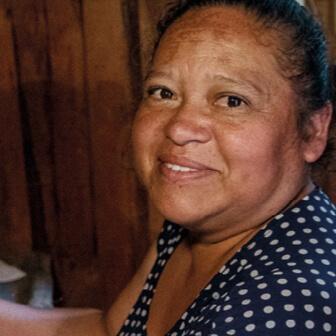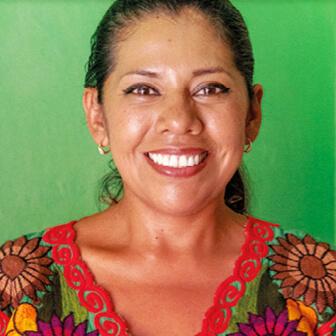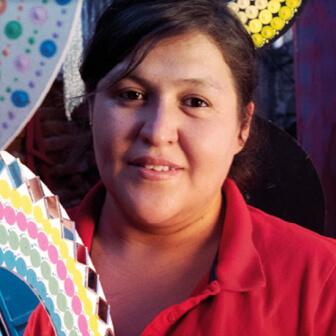Addressing the Most Common Challenges to Implementing Gender Mainstreaming Strategies
8 May, 2023
Blog, Press
Gender mainstreaming is a globally accepted, inclusive strategy that can provide both social and economic benefits. More and more companies worldwide have started the process of becoming more diverse and inclusive organizations by incorporating strategies, products, and services that promote gender equality, diversity, and inclusion. However, given that this approach involves adjusting and redefining pre-established structures, business models, and workspaces, companies and organizations often encounter specific challenges that make implementing a gender mainstreaming strategy more complex.
To provide solutions to support and strengthen the incorporation of gender equality, diversity, and inclusion in financial institutions, the Pro Mujer Gender Knowledge Lab and Acrux Partners joined forces to provide personalized technical assistance to four catalytic institutions in the Latin American financial sector.
Through the project “Mainstreaming Gender Smart Investment Strategies among Institutional and Commercial Investors in Latin America,” financed by USAID through the international development company DAI, Pro Mujer and Acrux Partners offered tailored technical assistance services and methodologies to Mercado Libre, Banco Inter, Alterna, and Davivienda, allowing these companies to identify opportunities for gender mainstreaming and design concrete solutions to incorporate this approach into their operations, policies, products, and services.
A customized three-step methodology was implemented to identify the challenges and priorities of each institution:
1. Conduct a DEI diagnosis and analysis to evaluate the institutional maturity of gender mainstreaming in each organization.
2. Implement personalized training based on the specific needs of each institution.
3. Design concrete action plans to address areas for improvement and achieve specific implementation goals.
During each step of the process, we identified the following common challenges, which reflect the issues and priorities within the financial ecosystem in Latin America:
- Limited institutional initiatives and resources to develop gender frameworks for investment portfolios, products, and services
- Difficulty in incorporating gender into the institution’s strategic vision in terms of its financial products and services and in terms of aligning marketing and communication campaigns with the needs of the target population
- Lack of gender-disaggregated data analysis and an intersectional approach when analyzing women’s access to finance and the challenges they face when accessing other financial sector opportunities
- Unconscious gender biases, such as cultural and historical biases, that impact and influence business models and product development
- Limited monitoring and evaluation of the impact of services or products with a gender focus
These challenges represent a crucial area of opportunity for most companies in Latin America’s financial and non-financial sectors, both in terms of social and economic impact. These organizations must receive support and technical assistance to identify these challenges and co-create holistic, sustainable solutions focused on people and the business.
Although the needs and context of each organization will vary, the knowledge obtained through the “Mainstreaming Gender Smart Investment Strategies” project helped us create a plan with key actions to address the most common challenges seen in the ecosystem in Latin America:
- Establish parameters and indicators: Understanding and studying the strategies implemented by other actors in the ecosystem helps establish parameters and indicators to inform an organization’s internal strategy. This is a significant first step for any organization to explore how other companies in the same sector have integrated gender into their operations and learn about the results.
- Develop a roadmap: Proposing a straightforward and scalable path for mainstreaming gender in an organization helps ensure that progress is gradual, effective, and long-term progress. Establishing a plan helps strengthen horizontal governance structures and introduces new participatory methodologies and transparent communication strategies that encourage everyone to participate in decision-making.
- Implement training to generate organizational change: This essential tool can help align organizational stakeholders. Implementing training can help organizations learn how to better communicate and market products targeted to women consumer segments, how to build safe spaces with a focus on diversity and intersectionality, and how to use gender-disaggregated data to create more inclusive marketing materials, communications, and publicity.
- Monitor the process and adjust accordingly: It is essential to understand that mainstreaming a gender perspective is an ongoing process that requires setting goals that can be consistently monitored, improved, and adjusted to ensure their effectiveness, relevance, and impact. Establishing monitoring, evaluation, and learning mechanisms will help detect and mitigate biases.
- Engage decision-makers: Ensuring buy-in from management and executive leadership is critical to guarantee the sustainability of each of these initiatives and the appropriate allocation of resources. Only in this way can it be ensured that the gender approach gradually becomes a structural axis of the organization.
As private sector institutions respond to global trends, managing gender, diversity, equity, and inclusion becomes critical to any successful corporate strategy.
Changing organizational culture, institutional structures, unconscious biases, and entrenched practices is a gradual process that requires specialized knowledge, strong commitment, and ongoing support to help build resilient structures and processes that evolve and improve over time to ensure long-term gender equality.
Making this a reality requires the support and commitment of leaders whose genuine dedication is converted into concrete actions that influence decision-making processes and contribute to effectively mainstreaming gender throughout the organization.
Initiatives such as the “Mainstreaming Gender Smart Investment Strategies” project encourage the Latin American financial ecosystem to recognize the barriers women face when accessing investment and invite them to use gender mainstreaming to co-create solutions that close these gaps and take advantage of areas of opportunity.
To learn more about the particular cases of each of the organizations, we invite you to explore The Gender Platform, a learning community and global space that offers self-assessment tools, strategic resources, and case studies to build knowledge on gender equality within the financial industry.






